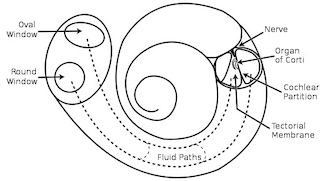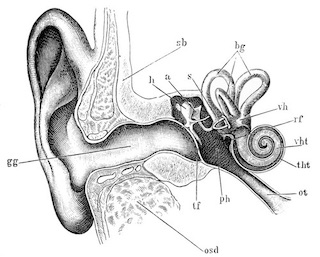Apr 19th, 2016 - Category: Sound
 I first wrote about Sonification back in 2014 in the post, “Sonification: The Science of Auditory Displays.” This YouTube interview (starting at 2 minutes) with David Worrall explains why the human ear is well suited for this task. He’s not the best presenter, but explains the concepts well.
I first wrote about Sonification back in 2014 in the post, “Sonification: The Science of Auditory Displays.” This YouTube interview (starting at 2 minutes) with David Worrall explains why the human ear is well suited for this task. He’s not the best presenter, but explains the concepts well.
- It can analyze frequency accurately and quickly. The cochlea is an FFT analyzer implemented in tissue.
- It is incredibly sensitive to time. The eye merges movement on the order of 1/10 of a second (which is why video looks continuous at 30 frames per second). The ear merges sounds at around 10 mS, an order of magnitude faster.
- It can simultaneously detect auditory events with minimal interference. For example, a trained listener can identify a single violin playing in a symphony.
- We don’t have “earlids.” In many cases, hearing draws attention and then seeing follows.
 He also gives some excellent examples of current uses on his website including computer network status and financial data. Of course, we all encounter sonification daily in the form of alerts and alarms, but the professional community around this field has grown enormously in the past few years. If you are really interested, the Sonification Handbook covers the topic in depth, 555 pages in depth! As their motto goes, “The Sonic Revolution is Hear!”
He also gives some excellent examples of current uses on his website including computer network status and financial data. Of course, we all encounter sonification daily in the form of alerts and alarms, but the professional community around this field has grown enormously in the past few years. If you are really interested, the Sonification Handbook covers the topic in depth, 555 pages in depth! As their motto goes, “The Sonic Revolution is Hear!”